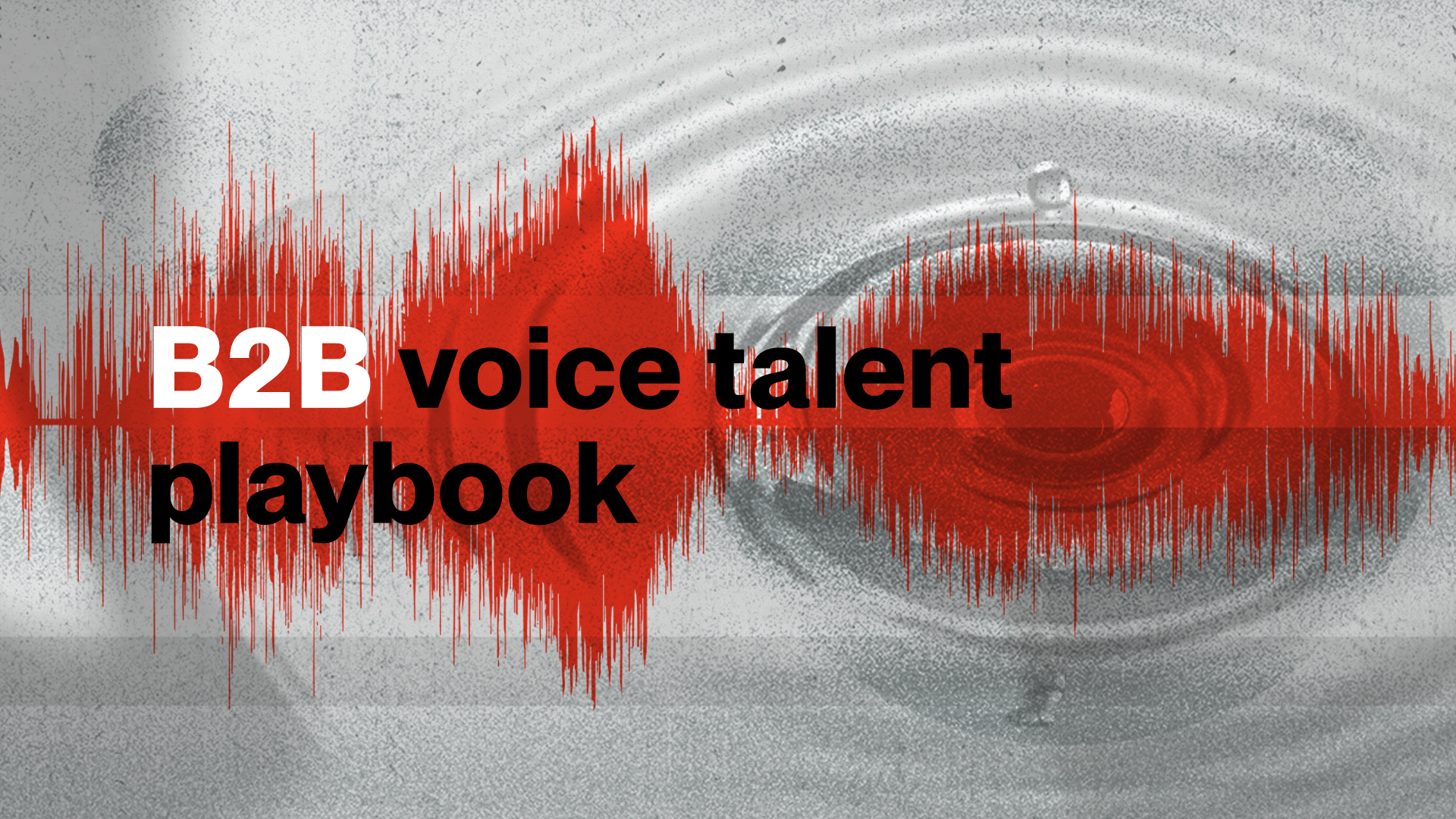Brand Voice isn’t just that section in your brand guidelines about tone and style – it’s also the literal voice of your brand, the human talent that brings your video and animation content to life.
How many of you B2B marketers have meticulously planned every aspect of your next video project, only to freeze when your creative agency asks how you envision the voice actually sounding? If you’re nodding along, you’re not alone. By this point, you’ve nailed the goals, approved the creative concept, polished the script, and maybe even started storyboarding. Now comes the crucial decision: selecting your voice talent.
Let’s walk through the key considerations.
Lock Down That Script
In a world of endless scrolling and instant gratification, length matters. Most marketing videos should aim for the sweet spot: 15 to 60 It might seem obvious, but you’d be surprised how often a script gets “approved,” your agency hires and records talent, only to have stakeholders request “tweaks” or major revisions afterward. While we understand that leadership might have changes of heart, securing full approval before recording saves significant time and budget.
Pro Tip Time: Circulate your script through all necessary organizational levels, get legal’s blessing, give key stakeholders final review, and only then give your agency the green light to proceed.
Budget and Usage Rights Matter
Before diving into casting, you need crystal-clear understanding of your budget and content distribution plans. Premium voice talent – the same artists voicing major brand campaigns – command higher fees for good reason. They bring professional-grade equipment, seasoned expertise in taking direction, and streamlined session management.
Usage rights significantly impact costs. An internal training video carries different pricing than a broadcast commercial. Script length and paid versus unpaid distribution also affect fees. And if Morgan Freeman’s on your wishlist? Better have deep pockets.
Pro Tip Time: Have this conversation during initial project budgeting to avoid mid-project surprises. Share your content strategy with your creative teams (or better yet, develop it together) to ensure accurate project scoping.
Your Brand Voice Guidelines
Remember when I said brand voice isn’t just about guidelines? Well, those guidelines are still crucial. Any solid brand guide includes how your brand should sound – from tone and writing style to formatting. No guidelines yet? Let’s talk. Your guidelines’ tonal descriptors (irreverent, approachable, witty, empathetic) help envision how your brand personality translates into an actual human voice.
Pro Tip Time: Review your customer buyer profiles when casting. While your brand voice remains consistent in writing, the actual voice resonates more deeply when it reflects your audience.
Demographics Drive Connection
During scripting, we always ask about target demographics for the speaking voice. While this includes various factors, the most common are language, accent, gender, and age. Rather than casting a wide net, think strategically about which demographics align with both your brand personality and audience composition. People naturally engage more with voices that mirror their sensibilities. Global brands often cast different accents to resonate with specific geographic regions.
Pro Tip Time: Need an uncommon accent beyond standard British or American English? Build in extra time for gathering suitable auditions. Need different languages? Communicate that early and expect additional costs associated with hiring more artists and tweaking the content to fit. As an example, did you know that French translations are about 15-20% longer than their original English text?
Consistency Creates Recognition
Your brand might have an established voice, scattered content with various artists, or be starting fresh. Maybe you’re creating a content series separate from existing material. All these scenarios impact brand consistency. Depending on your project goals, audience needs, and other factors, you might choose a single voice or intentionally vary your approach.
Pro Tip Time: Choosing a single voice artist across all content? Work with your agency to negotiate favorable pricing, licensing, and streamlined workflows.
The Art of Auditions
While casting calls include basic direction, auditions are typically cold reads. Take certain elements with a grain of salt. We listen for fundamentals: Does the tone align? Does the artist show flexibility with different directions? Remember, auditions are just the starting point – the real shaping happens during recording.
Pro Tip Time: Cast with your most current script version. While you don’t need the final script to cast, it helps stakeholders envision the voice reading actual content. Include creative references like inspiring videos or music to guide artists on energy and pacing.
Collaborative Recording Sessions
Having clients join recording sessions is invaluable. While in-person sessions exist, today’s digital landscape means most casting and recording happens remotely, expanding our talent pool. Client participation ensures your vision translates accurately and prevents unwanted surprises. Before sessions, align with your agency on direction to avoid confusing talent with competing visions.
Pro Tip Time: Review some basic industry terminology before the session – it helps communicate ideas more effectively. And remember, professional voice talent excel at translating even abstract concepts into compelling reads. Don’t hesitate to experiment!
There you have it – the essential elements for selecting the perfect voice for your next video or animation project. Your agency can now cast, create a shortlist, and help you select and record the ideal voice for your brand.
Questions about finding your brand’s perfect voice?
Let’s talk – we’re here to guide you through every step.

Meet blog author Sam Oddo,
Partner & Creative Director, Live Action + Animation
Read his bio here

